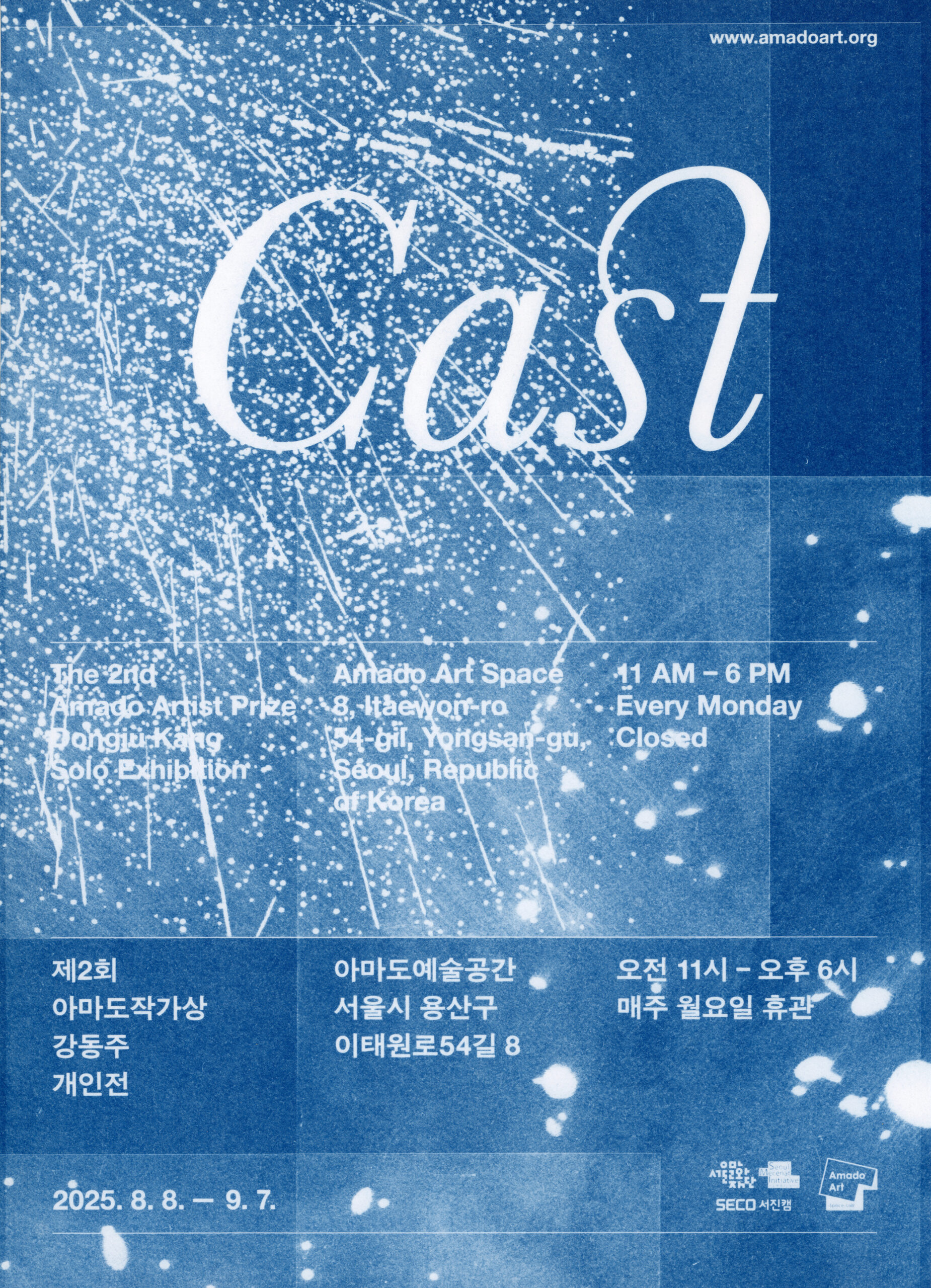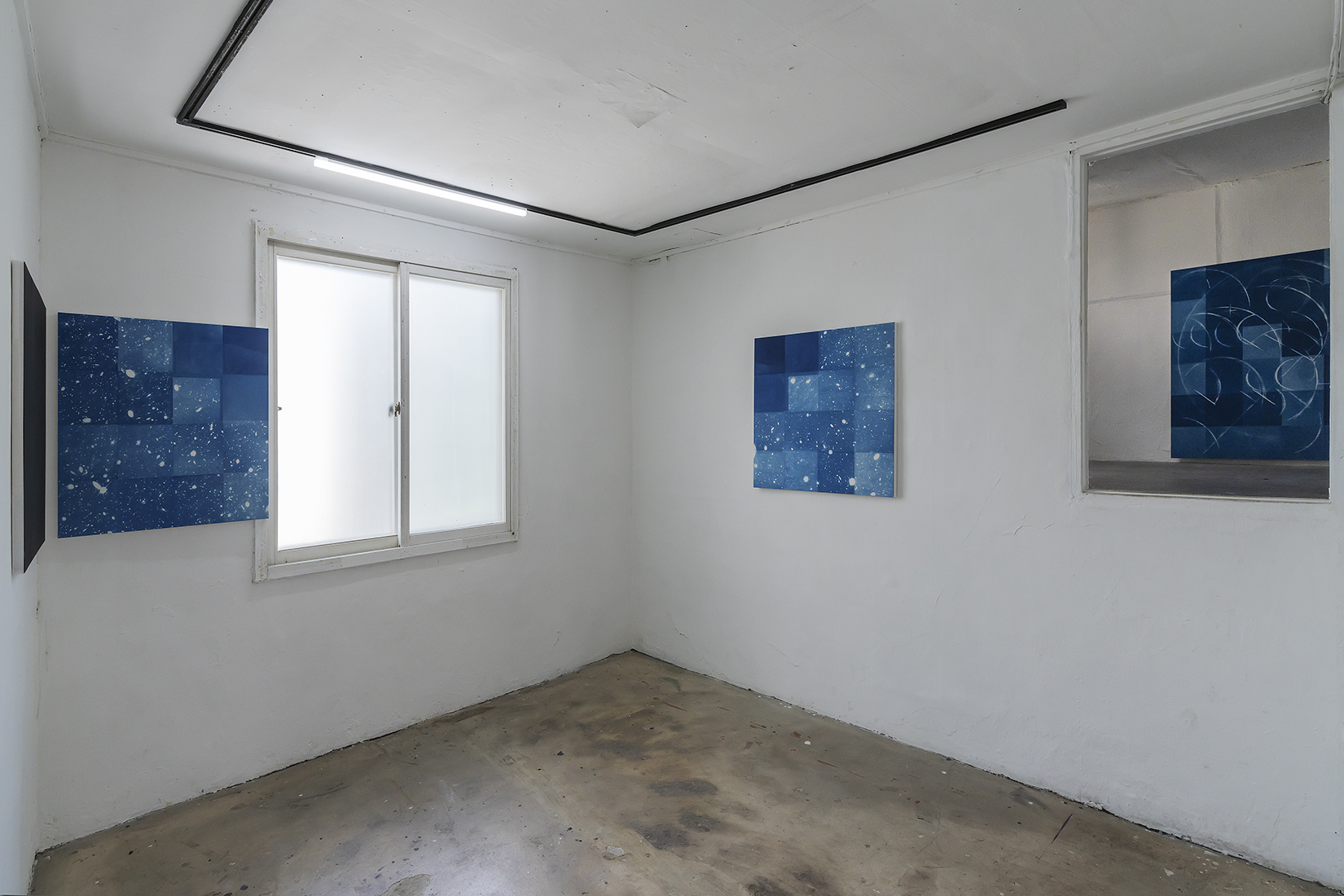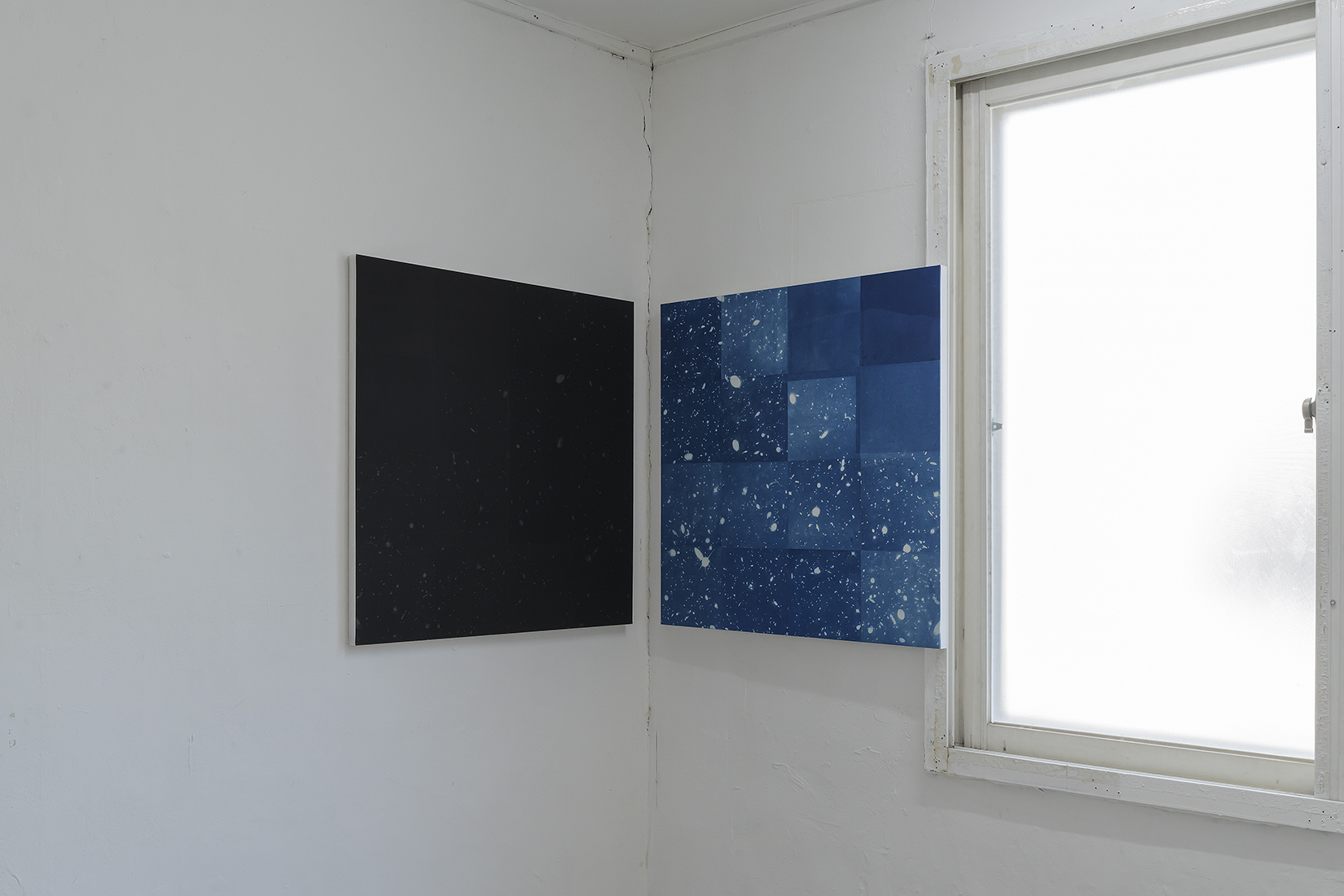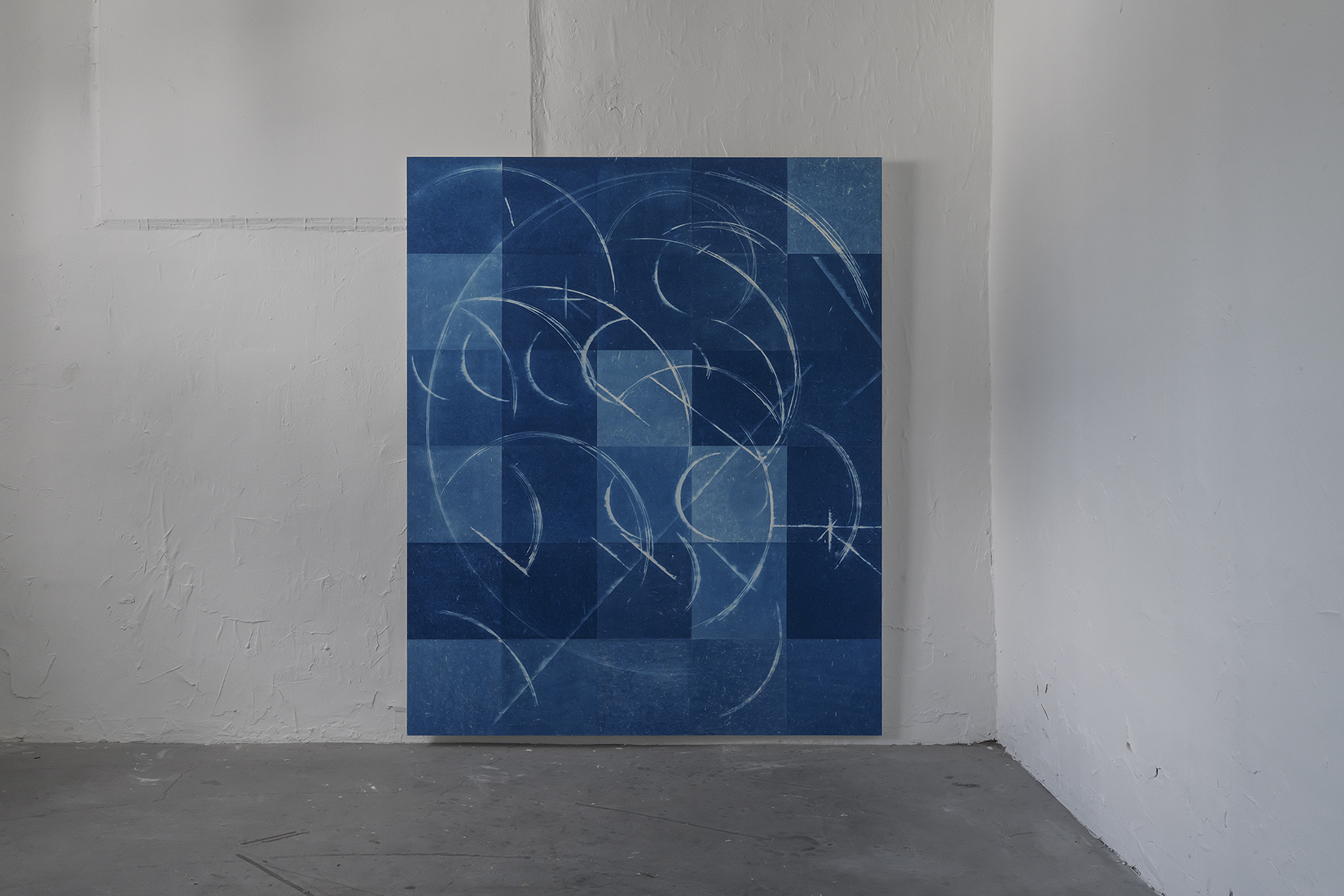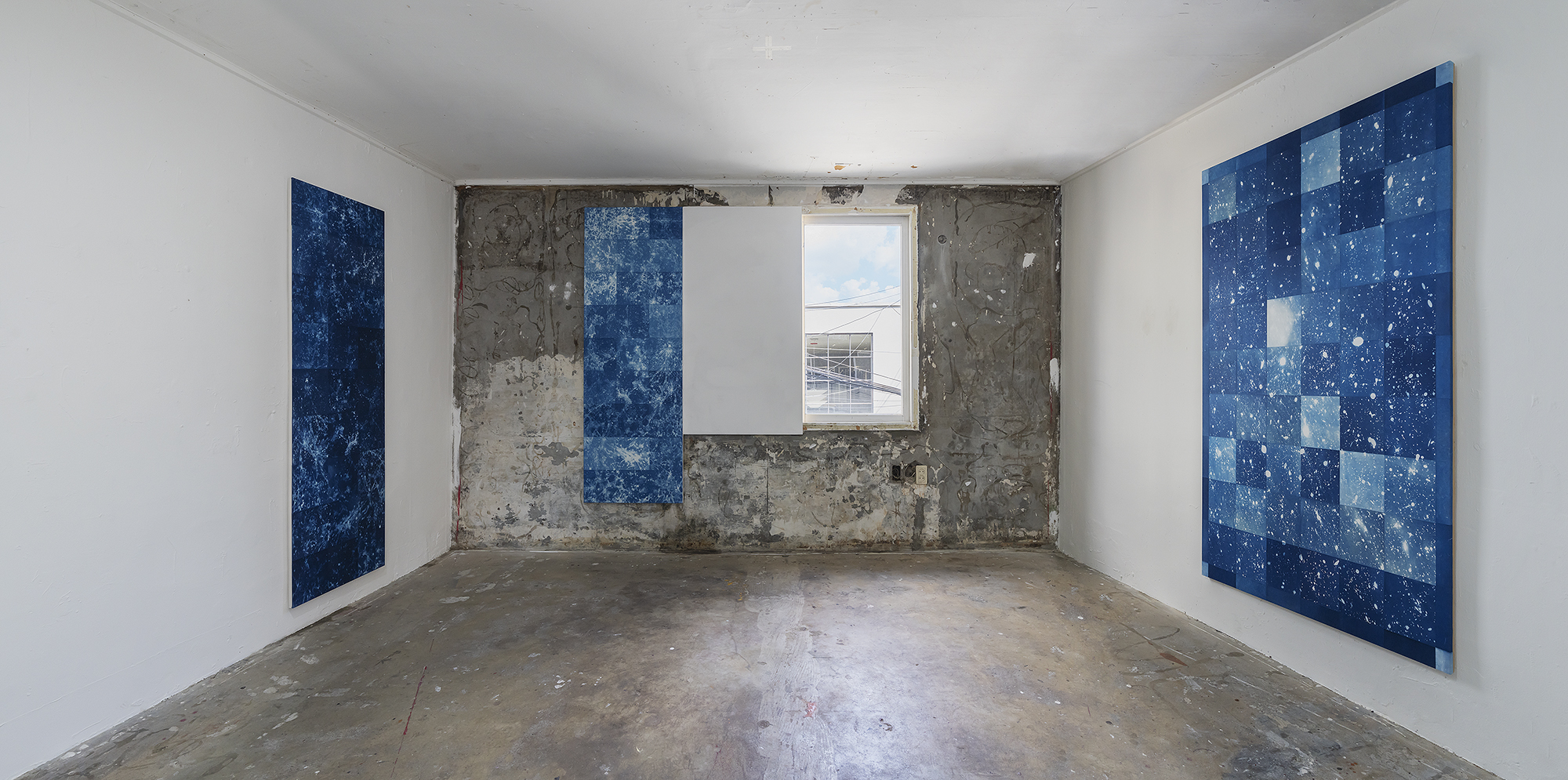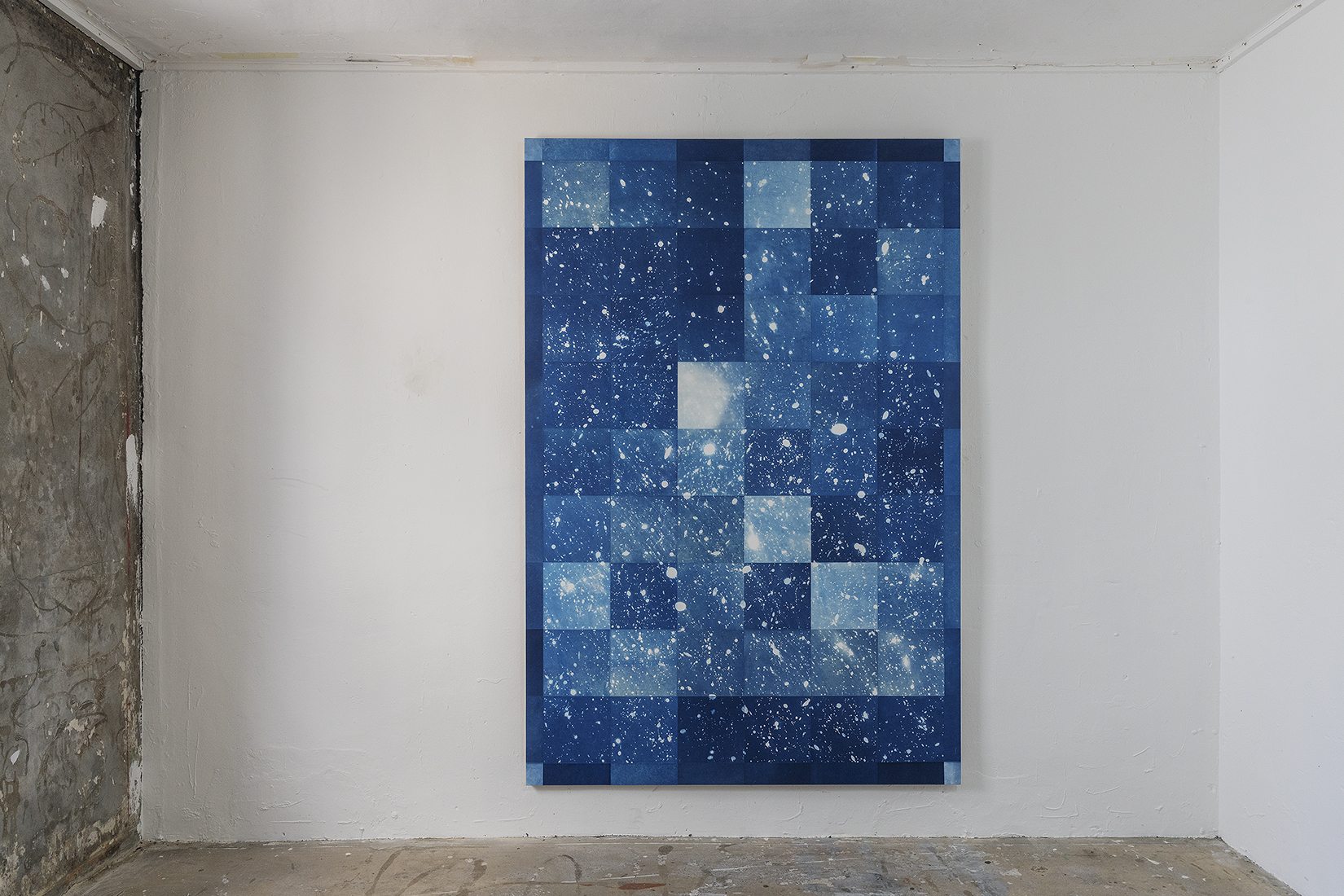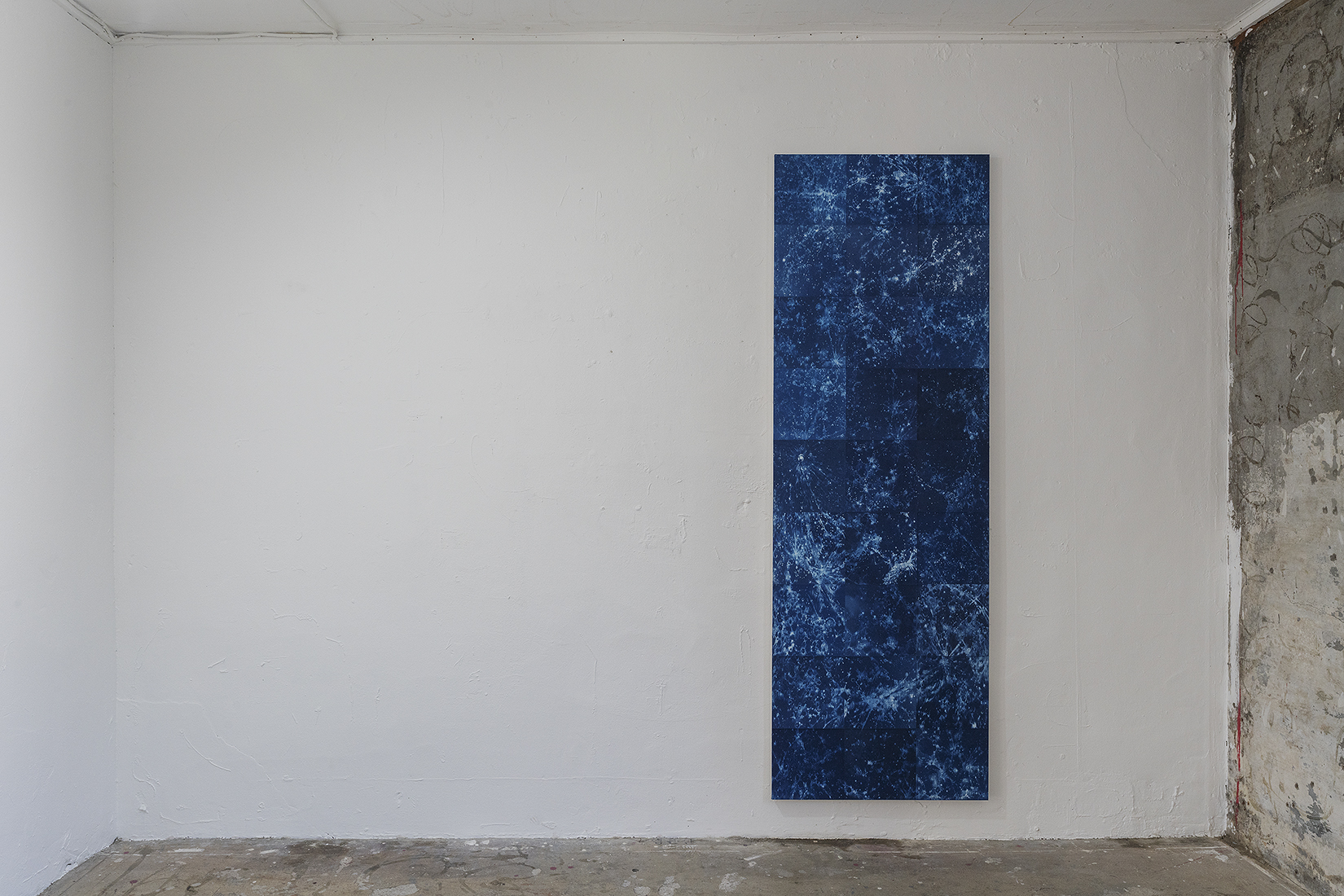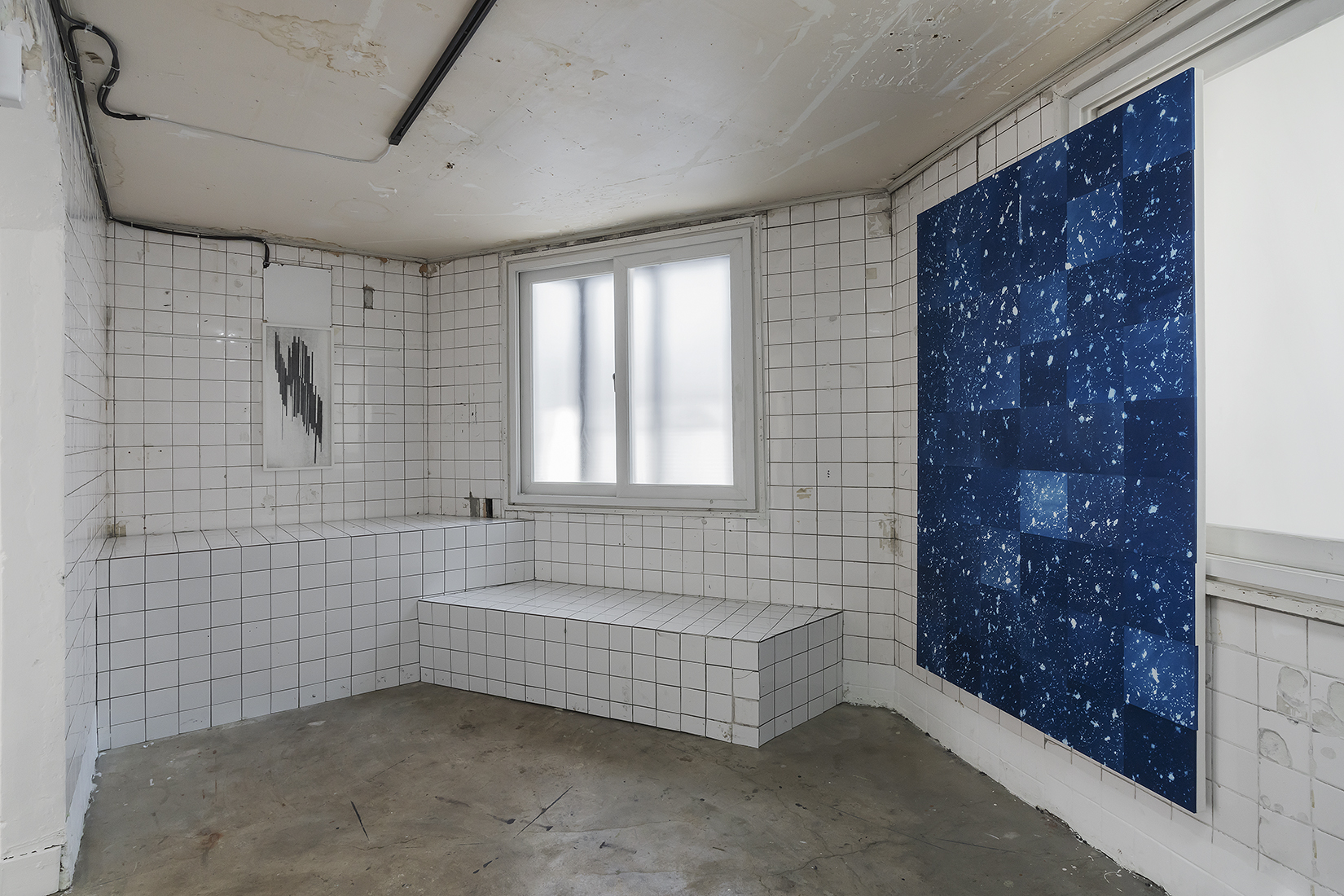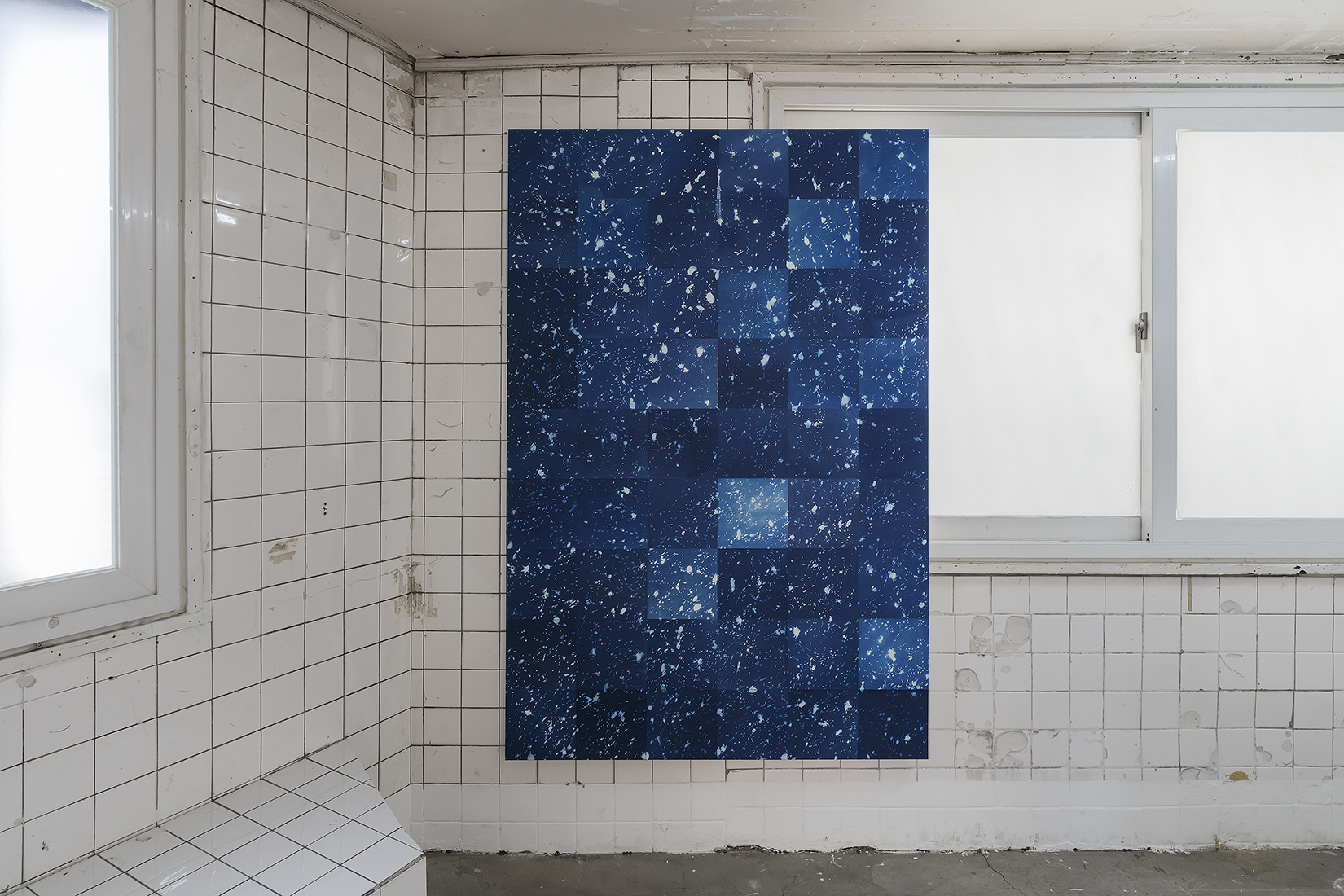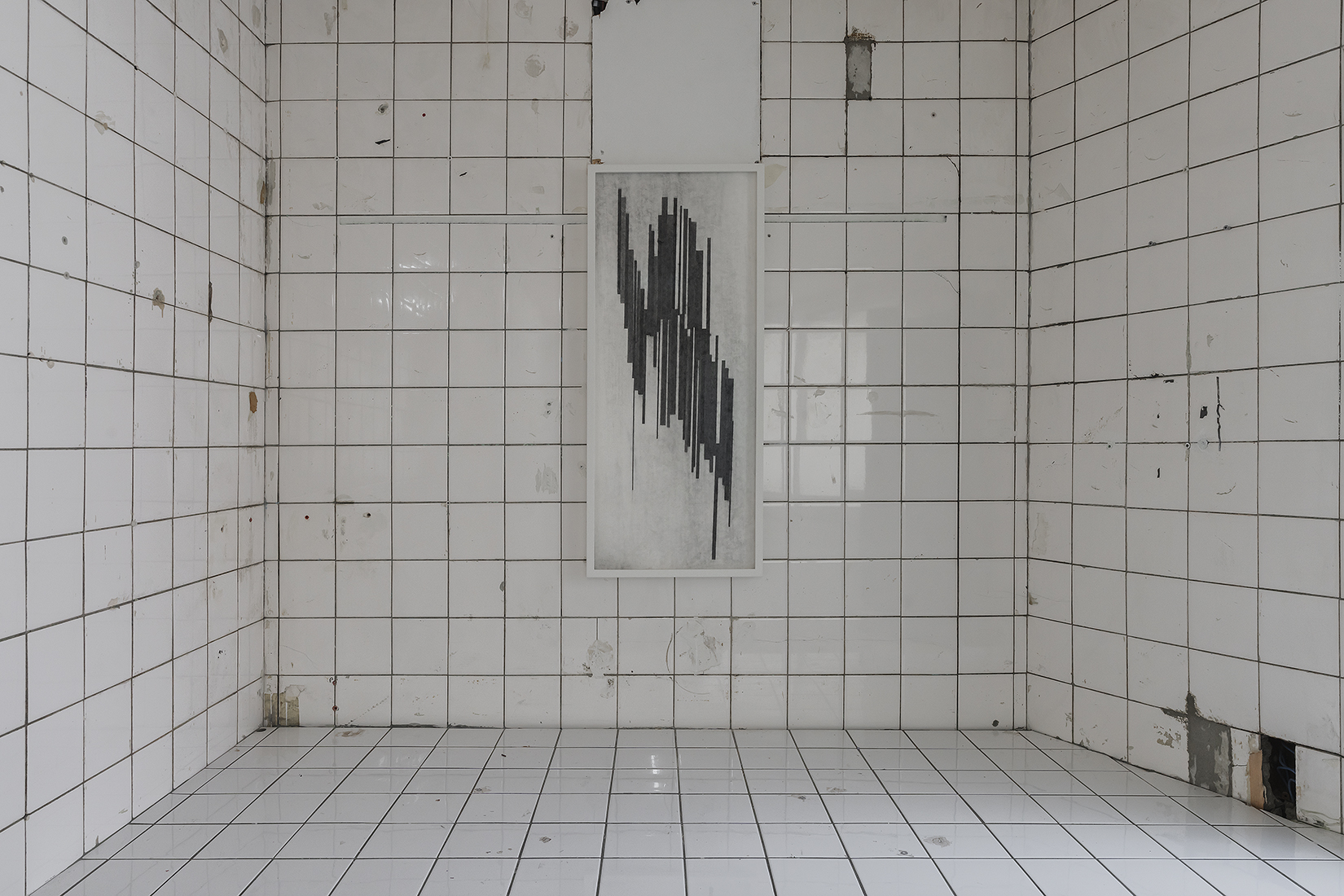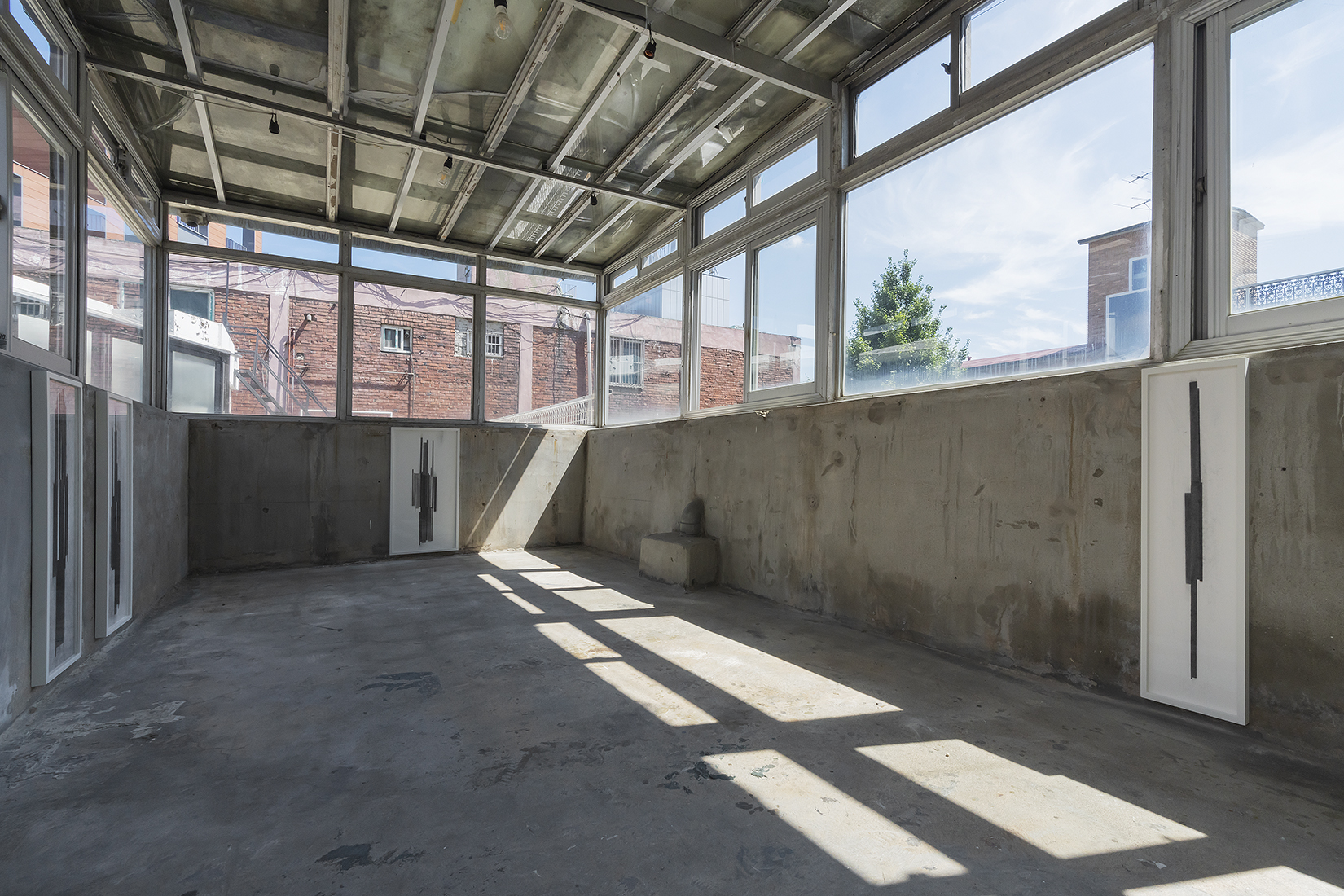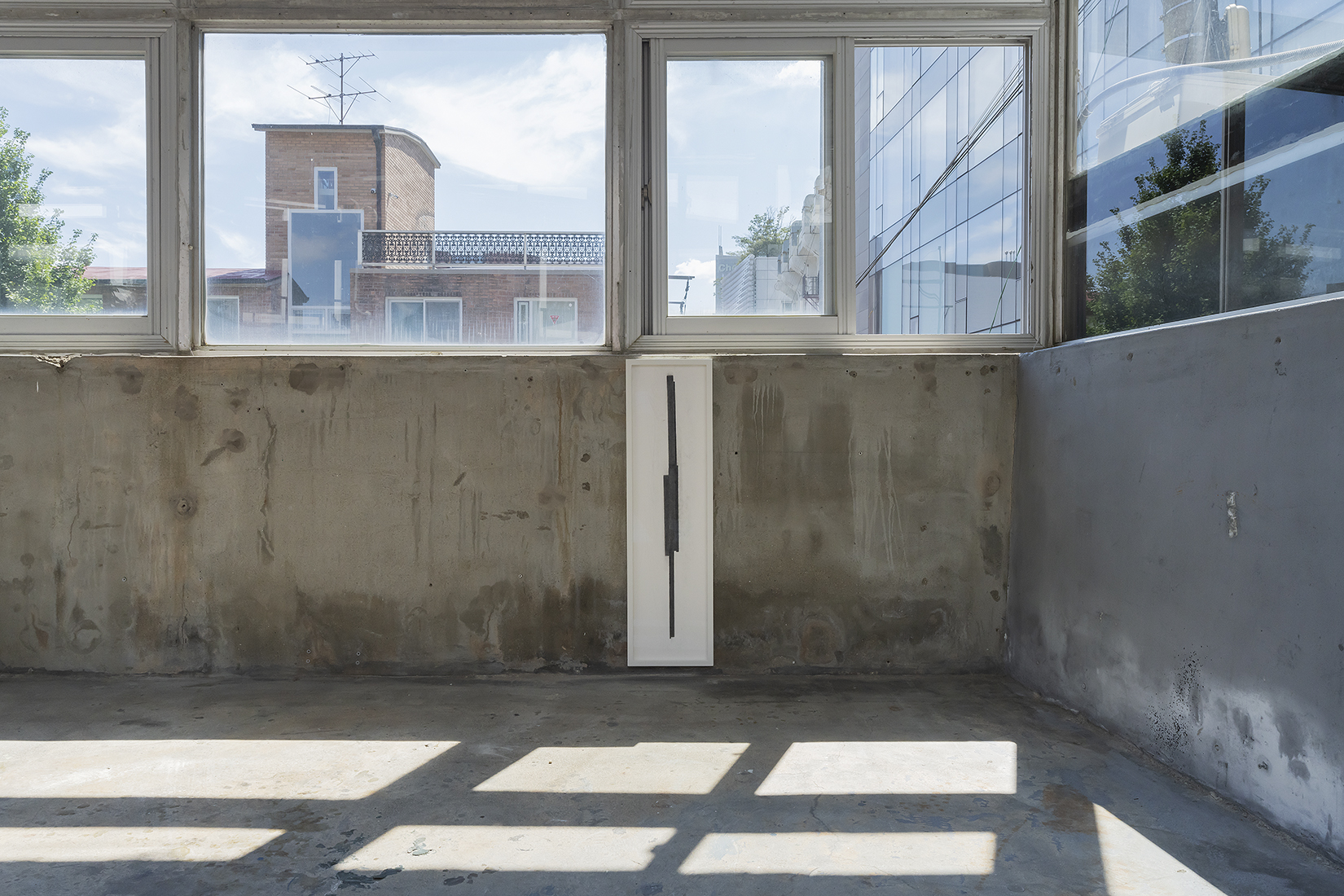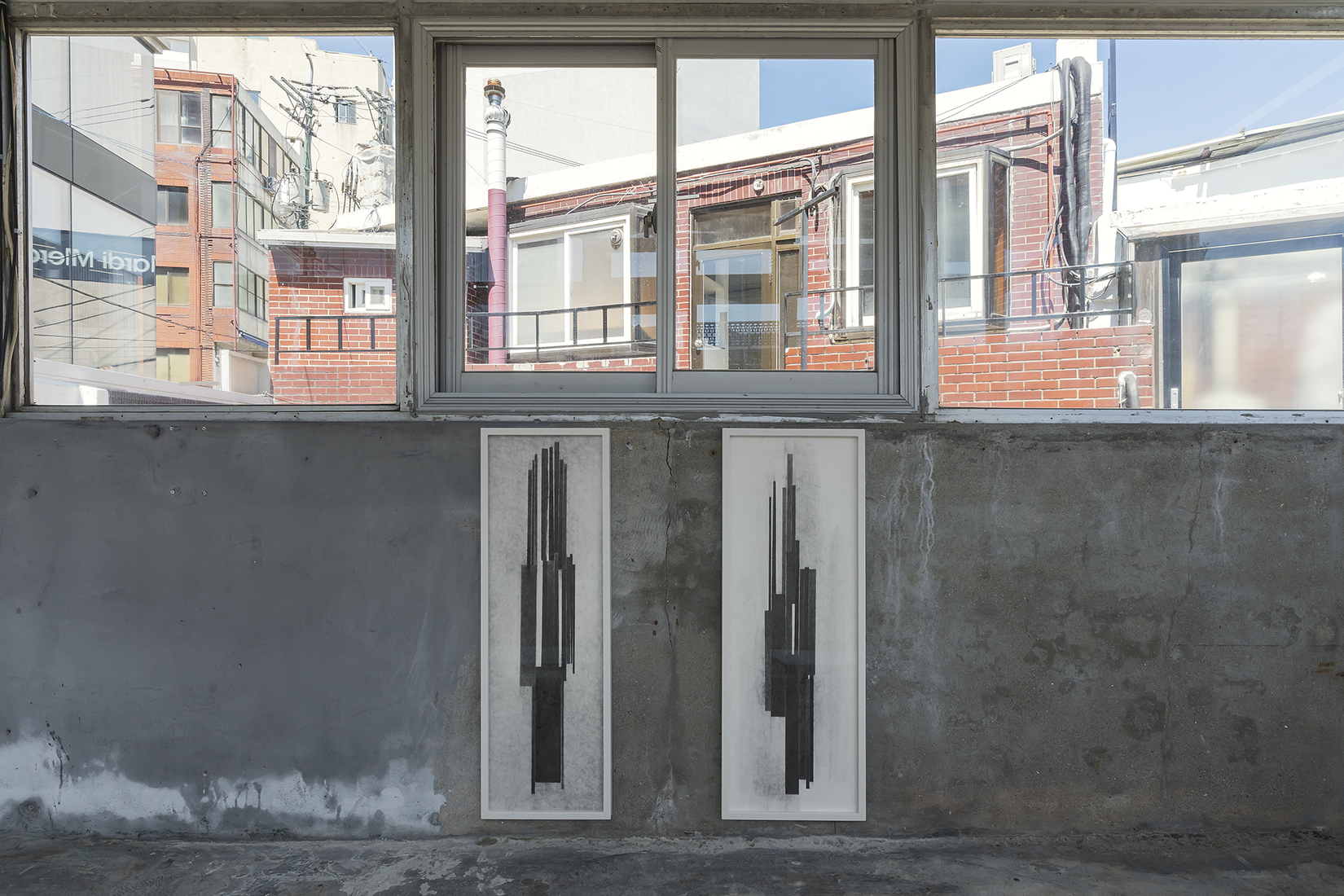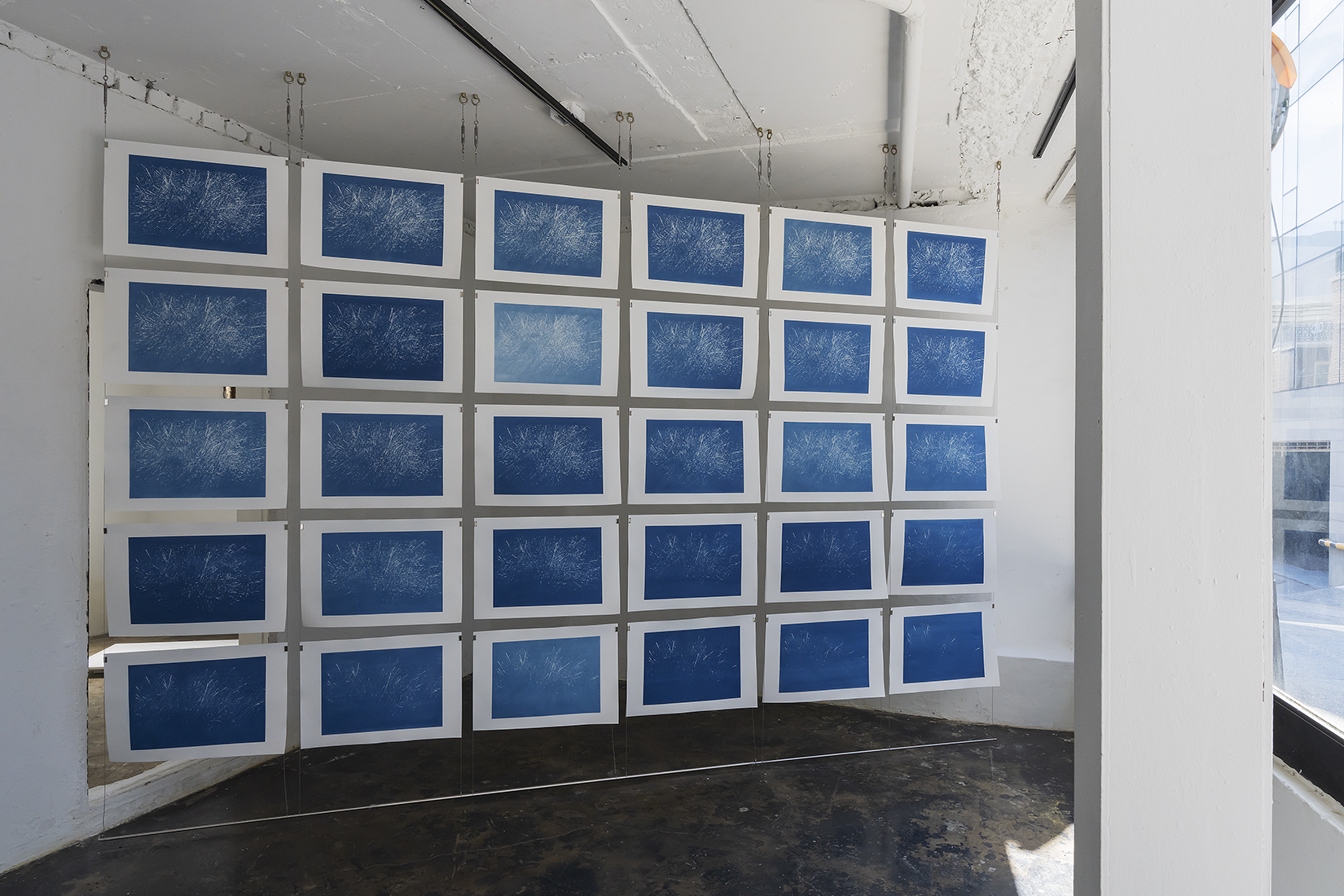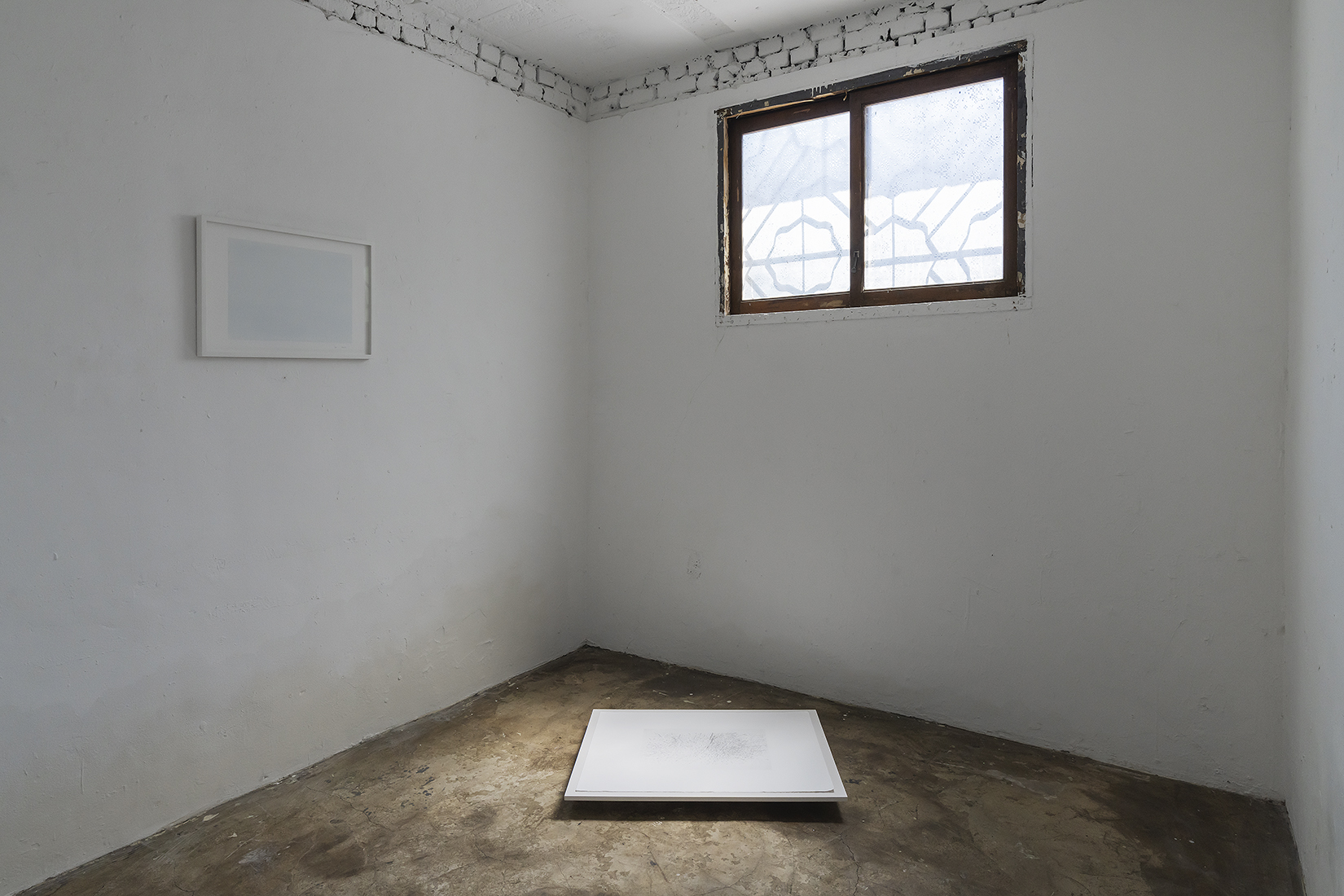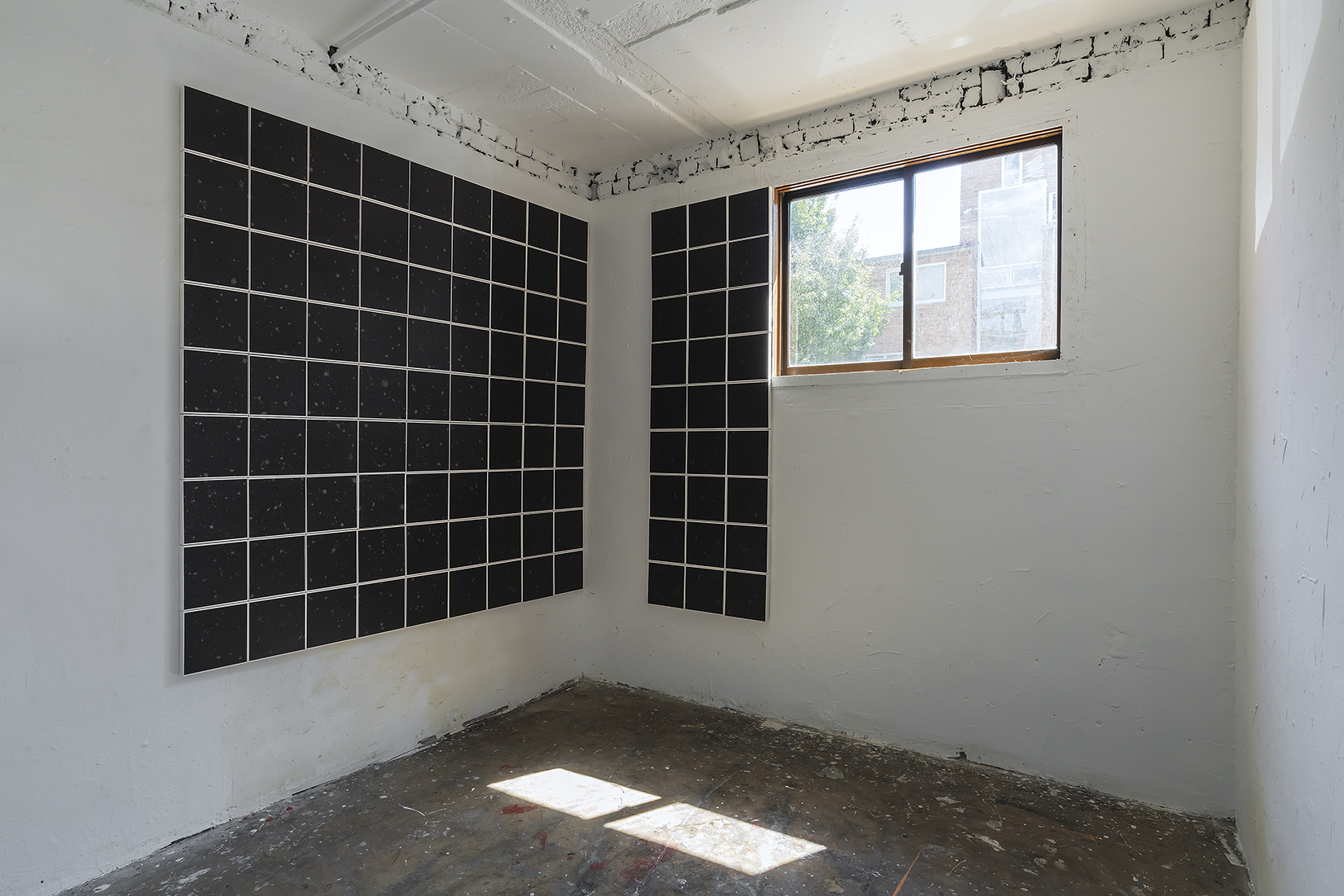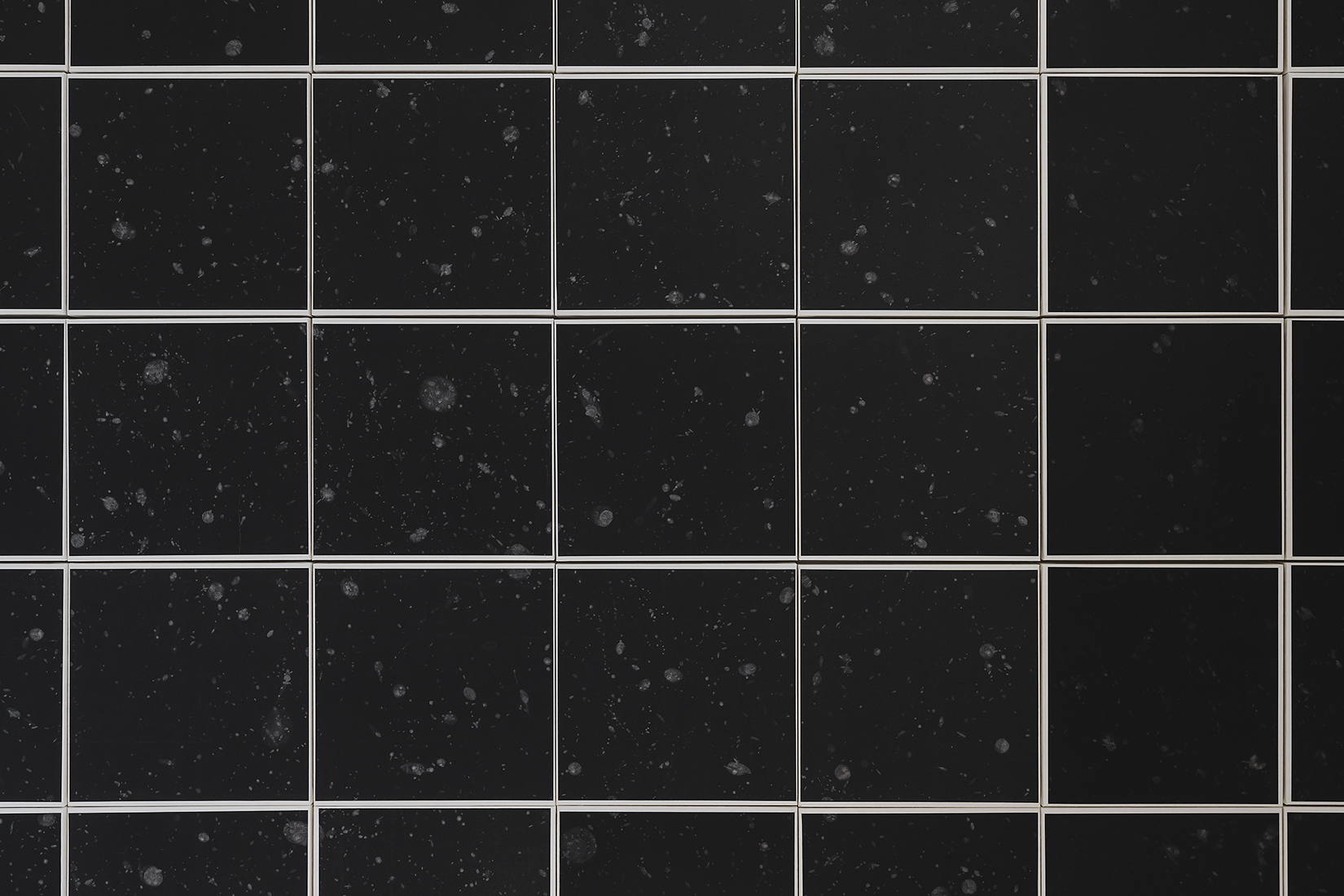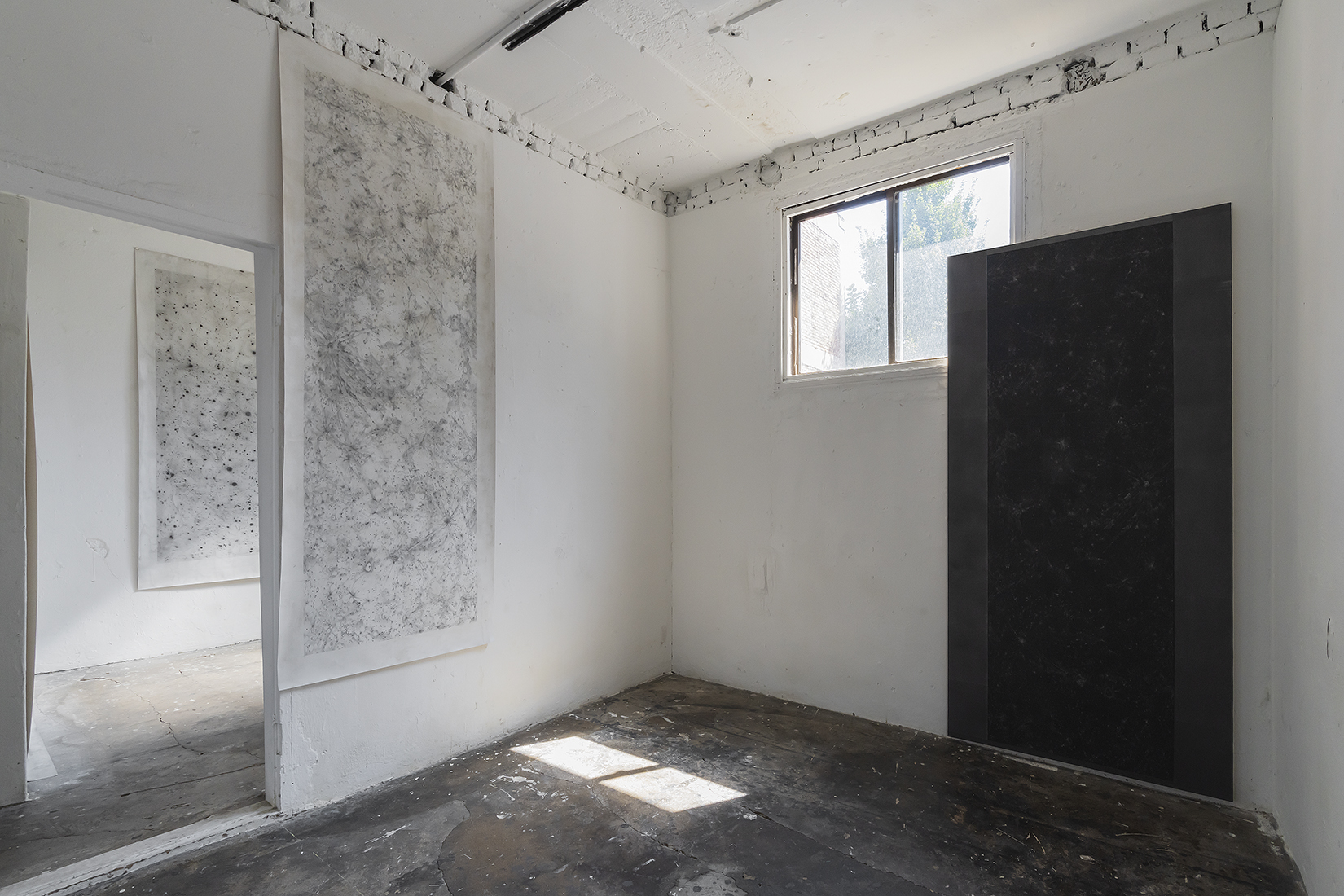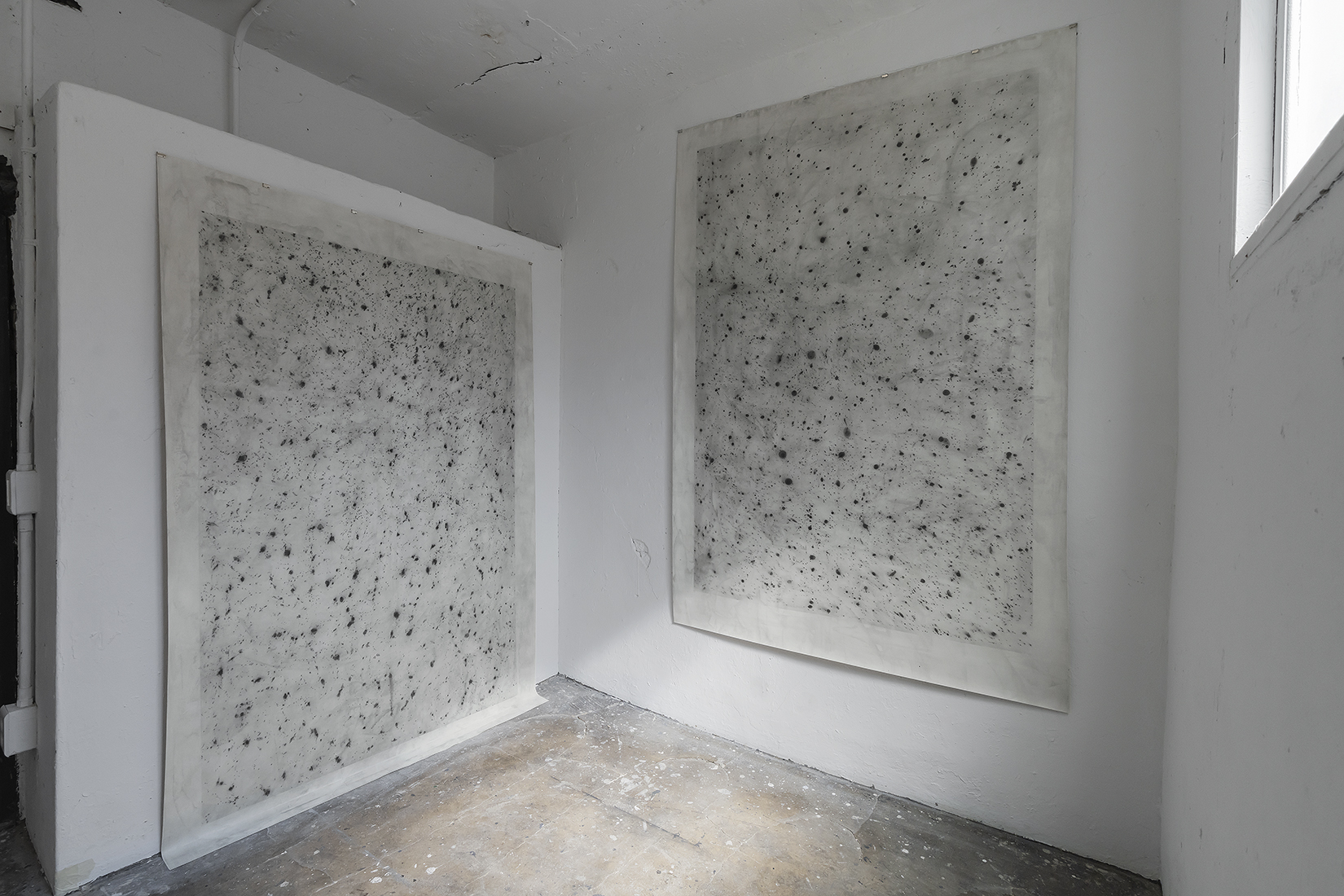제2회 아마도작가상 강동주 개인전 《Cast》
The 2nd Amado Artist Prize Dongju Kang Solo Exhibition - Cast
아마도예술공간은 제2회 아마도작가상 수상자 강동주의 개인전 《Cast》를 오는 8월 8일(금)부터 9월 7일(일)까지 진행한다. 강동주는 누구의 눈에든 쉽게 스쳐갈 법한 광경들을 빛과 어둠을 거푸집 삼아 흑백의 면으로 옮겨왔다. 특히 작가는 시공간과 그 흐름을 가늠할 수 있는 대상을 반복적으로 관찰-감각하고, 시간공이 어린 대상의 표면에 물질을 면을 접촉하고 호응시키는 직간접적 프로타주 또는 판화적 기법이 적용된 전사 과정을 진행한다. 작가의 이러한 방법론은 필사라는 문학적 방법론을 경유해 설명된 바 있듯, 시공간을 작가의 신체라는 장소와 그의 옮겨냄이라는 행위의 시간 속에서 낱낱이 감각하고 현재화하는 수행이다.
《Cast》에서도 작가의 ‘수행’이 통과해내는 시공간과 그 장면의 속성은 유사하다. 물론 이번엔 우리가 직접 마주할 순 없는, 상상하기조차 어려운 거리를 거쳐 빛과 어두움으로 전해져 온 공간을 다루기도 한다. 달 표면의 세세한 얼굴, 찰나의 궤적으로 조우한 유성우, 텅빈 어둠 속을 가득히 채운 은하들. 가시영역을 넘어 먼 시공간을 응시하려는 오랜 의지가 연장되어 마침내 마주친 이 장면들을, 작가 역시 긴 호흡으로 지켜보며 다시 스스로의 시공간으로 거쳐낸다. 그러나 이번엔 그의 신체와 행위 외에, 옮겨냄의 과정에 개입하는 ‘또 다른’ 시공간이 등장한다. 푸른 장면들이 그 물질적 증거다. 이 청색의 이미지들은 시아노타입(청사진)이라 불리는 초기적 사진(인화)술을 거친 것이다. 감광액을 도포한 면 위에 물체나 이미지를 올리고 자외선에 노출하면 빛이 투과한 영역은 푸르게, 차단된 영역은 밝게 남으며 대상의 형과 태가 청-백의 이미지로 맺힌다. 옮겨낼 시공간-대상은 이전과 유사한 방식으로 분절되어, 각각 약 하루의 시간 동안 그 날의 빛과 어둠의 변화에 노출된다. 예컨대 이미지 전체가 각 30개의 청색 면으로 나뉘어 있다면, 이는 대략 한 달에 거쳐서야 옮겨진 것이다. 전시에 나열되거나 중첩된 푸른 장면들이, 마치 각기 다른 농도의 염료로 물든 천들을 이어붙인 얼룩덜룩한 조각보 같은 이유가 바로 여기에 있다. 시아노타입 과정에서는 빛의 세기와 노출 시간에 따라 상의 휘도와 음영의 깊이가 결정되기 때문이다. 날이 어두워지면 옮겨질 시공간은 더 밝게(하얗게) 흐려지고, 반대의 경우엔 더 어둡게(푸르게) 선명해진다. 옮김의 시간이 흐르는 장소의 채광 조건이 바뀌어도, 혹은 계절이 바뀌어도 마찬가지다. 심지어 장소의 사물들이 움직여 빛을 가리거나 빛에 길을 내준다면, 그 변화 역시도 푸르거나 흰 흔적을 남긴다. 바꿔 말해 작가의 수행에서 대상이자 조건이었던 어둠과 빛, 낮과 밤, 계절과 시공간은 이제 스스로를 틀짓는다.
대상의 부재에 정박된 재현의 숙명을 잘 알면서도, 부재함의 틀(Cast)를 계속해 틀지어내려는(Casting) 강동주의 수행은 영속할/사라질 시간과 공간을 들여다보려는 ‘헛된’ 노력들과 맞닿아 있다. 결국 그의 Cast(ing)는 비록 유사한 틀(Cast)만을 증식할 지라도 계속해 현재를 감각할 주문을 거는 행위(cast a spell)에 가깝다 말할 수도 있을 것이다.. 물론 사라진 대상의 허깨비를 붙잡는다는 환영술이나, 그리운 대상을 호출해낸다는 소환술처럼 상상된 요술을 말하는 것은 아니다. 거듭해 같은 문구를 반복하는 ‘주문’이 과거를 반추하고 두려운 미래를 극복하되, 결국 오롯이 지금 여기의 나를 다잡기 위한 발화인 것처럼. 그의 옮겨냄 역시 끊임없이 현재에 가닿는 행위다.
전시는 그 과정중 일부를, 바로 여기 당신에게로 맞댄다. 음영과 농담(濃淡)으로 스민 나날들을 마주하는, 스스로의 지금과 마주해보기를 속삭이며.
Dongju Kang captures fleeting, easily overlooked scenes, transposing them into black-and-white surfaces using light and shadow as molds. She repeatedly observes and senses subjects that embody the passage of space and time. Through processes akin to indirect frottage or printmaking, she conducts acts of transcription—pressing material surfaces against time-worn subjects to imprint their texture and temporality. As previously likened to literary transcription, the artist’s methodology is a performative gesture: one that senses space-time through the site of her body and the temporality of her acts of inscription.
In Cast, the kinds of time and space the artist “passes through” remain consistent. This time, however, they include spaces we can neither directly encounter nor easily imagine—spaces conveyed through light and darkness. The cratered face of the moon, meteors met in a flash of orbit, galaxies crowding the void. These scenes, arrived at through a long desire to gaze beyond the visible realm and into distant space-time, are also watched over by the artist, who then transcribes them into the space-time of her own body.
Yet now, another dimension enters the act of transcription—an external space-time that intervenes in the artist’s bodily engagement. The material evidence of this intrusion is found in the series of blue images. These are made using cyanotype, an early photographic printing technique. When a sensitized surface is exposed to ultraviolet light with an object or image placed upon it, the areas struck by light turn deep blue, while blocked areas remain pale, leaving the subject rendered in a blue-and-white imprint. The subjects are segmented and transcribed like her previous works, with each fragment exposed to the day’s changing light and shadow over approximately a single day. For example, if an image is divided into 30 blue panels, the complete transcription would span roughly a month. This is why the assembled or layered blue scenes in the exhibition resemble a patchwork of fabrics—each dyed by a different concentration of pigment.
In the cyanotype process, the image’s brightness and depth of shadow are determined by the intensity and duration of light exposure. When the day is dim, the resulting imprint becomes paler (whiter); in strong light, it appears darker (bluer). The same applies when the ambient lighting shifts due to the changing season or the movement of objects within the space. Such interruptions too leave behind traces—blue or white. In this way, what were once mere subjects or conditions—light and darkness, day and night, seasons and spacetime—now come to shape themselves.
Though fully aware of the representational bind tethered to absence, Dongju Kang continues to cast molds of that absence—a sustained act of Casting that resonates with the futility and beauty of attempting to perceive disappearing time and space. Her cast(ing), one might say, is less about summoning lost forms than about casting a spell—a repeated incantation to re-attune herself to the present. This isn’t magical thinking in the sense of conjuring ghosts or calling back the departed. Rather, it resembles the repetition of a phrase that helps one process the past, face the future, and steady oneself in the now. Her acts of transcription, too, are continual gestures toward presence.
The exhibition offers a fragment of this process—placed here, before you. It softly invites you to encounter your own present, through these days steeped in shadows and light.
